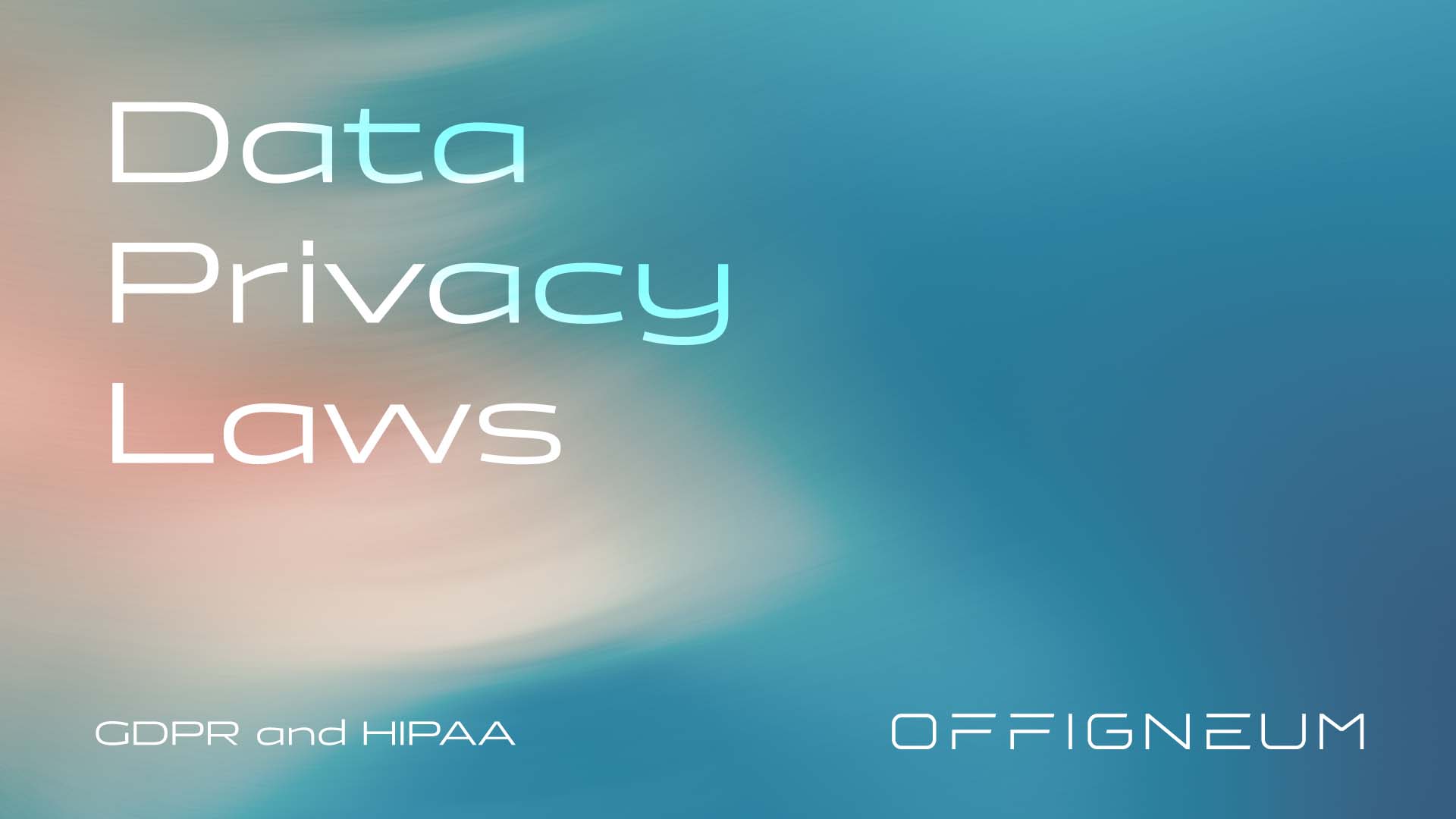Data privacy rules have changed a lot in recent years. What started as simple advice for businesses has become strict laws. These laws can help or hurt a company. In 2025, data privacy laws are stricter than ever. Companies that work with personal information must follow detailed rules. These rules tell them how to store, use, and delete data. One of the most important parts is learning how to delete files the right way. But many people still don't understand this part of data protection.
Many business owners think deleting files is easy. They think clicking the delete button is enough. They believe moving files to the trash and emptying it removes the data forever. They think this protects their business from legal problems. This wrong idea is dangerous. It can cause big legal problems. These problems can cost a lot of money. The truth is much more difficult. You need to understand how computers really handle file deletion.
The Hidden Problem with Normal File Deletion
When you delete a file on Windows, you might think the information goes away completely. But the computer only removes the file's name from the list. Think of it like this: imagine removing a book's card from a library catalog. The book is still on the shelf. The real data stays on your hard drive. It sits there waiting for someone to find it.
This creates a big problem for businesses that work with sensitive information. Special software can easily find and bring back these "deleted" files. These recovery tools are not expensive or hard to use. Anyone can download them from the internet. Then they can scan drives for data that can be recovered. If someone uses data recovery software on your old computer, they might find:
- Customer personal information
- Employee records
- Financial documents
- Medical records
- Important business secrets
The problems go beyond simple privacy issues. Under current data privacy laws, you are still responsible for protecting personal information even after you try to delete it. This means that bad deletion methods can expose your business to legal problems, fines from regulators, and damage to your reputation. It could take years to recover from this damage.
Understanding GDPR's Strict Rules for Deleting Files
The General Data Protection Regulation (GDPR) affects any business that handles data from people living in Europe. It doesn't matter where your company is located. If you have European customers, employees, or partners, GDPR applies to your business. One of the most important rights under GDPR is called "the right to be forgotten." This means people can ask you to delete their personal data. You must do what they ask completely and quickly.
GDPR requires that companies delete personal information "without delay" when certain conditions are met. The law doesn't give you much flexibility here. You must respond quickly and completely remove all traces of the person's information from your systems. This includes:
- The obvious files
- Backup copies
- Log files
- Temporary files
- Any other locations where the data might exist
The law also sets strict limits on how long you can keep personal data. You cannot store personal information forever just because it might be useful someday. GDPR requires you to delete information when:
- You no longer need it for the original purpose
- The person takes back their consent
- The data was collected illegally
- A legal requirement demands deletion
These situations happen more often than many businesses think. This makes regular secure deletion a necessary part of following the rules.
What makes GDPR particularly challenging is that it doesn't say exactly how to delete data. But it does require that deletion be complete and secure. The law uses words like "erasure" rather than simple "deletion." This suggests that surface-level removal is not enough. Courts and regulators have made it clear that normal file deletion methods do not meet GDPR standards. This is because they leave data that can be recovered.
HIPAA's Demanding Rules for Healthcare Data Destruction
Healthcare organizations face even stricter requirements under the Health Insurance Portability and Accountability Act (HIPAA). HIPAA controls how medical information is handled throughout its entire life cycle. This includes the final destruction phase. The law recognizes that medical data is among the most sensitive personal information. It requires extraordinary protection measures.
HIPAA specifically says that healthcare providers must securely destroy unused or old media containing protected health information. This requirement covers all forms of digital storage:
- Computer hard drives
- Backup tapes
- Mobile devices
The law emphasizes that simple deletion is not adequate. Many recovery tools can easily restore files that have been deleted using standard methods.
Healthcare data subject to HIPAA destruction rules includes:
- Patient medical records
- Insurance information
- Treatment histories
- Billing records
- Any health-related communications
Even information that seems minor can contain protected health information. This includes appointment schedules or phone logs. They require secure destruction. The comprehensive nature of these requirements means healthcare providers must have strong systems. These systems identify and securely destroy all forms of patient data.
The Serious Legal Risks of Wrong File Deletion
The consequences of failing to delete files properly go far beyond theoretical compliance issues. Businesses face real financial and legal risks when their deletion practices don't meet regulatory standards. These risks have grown significantly. Regulators are becoming more aggressive about enforcement. Data recovery technology is becoming more sophisticated.
Under GDPR, the financial penalties can be devastating for businesses of any size. Regulators can impose fines up to:
- Twenty million euros, OR
- Four percent of a company's annual global revenue
- Whichever amount is higher
These fines are not just theoretical threats. European regulators have already imposed hundreds of millions of euros in penalties for various GDPR violations. Inadequate data deletion has been a factor in many of these cases.
HIPAA violations carry their own serious consequences. Healthcare providers can face fines ranging from one hundred dollars to fifty thousand dollars per violation. Criminal charges are possible in severe cases. Medical professionals may lose their licenses. Organizations may face mandatory compliance audits that can disrupt operations for months. The reputation damage from HIPAA violations can be particularly severe in the healthcare industry. Trust is essential for maintaining patient relationships.
Perhaps most concerning are the secondary consequences. These occur when improperly deleted files are recovered by criminals or competitors. When sensitive data falls into the wrong hands, it can lead to:
- Identity theft affecting your customers
- Financial fraud using recovered information
- Expensive lawsuits from affected individuals
- Additional regulatory action from government agencies
These cascading effects can continue for years after the initial security failure.
Real-World Examples That Show Recovery Risks
Consider what happened to a small consulting business. They decided to sell their old office computers when upgrading their equipment. The business owner thought he was being responsible. He deleted all the files and emptied the recycle bin before selling the computers online. However, the buyer was curious about what might be recoverable on the used drives. He ran a simple data recovery program. Within minutes, the recovery software found hundreds of files. These contained:
- Client contracts
- Financial projections
- Personal information about the consulting firm's customers
The buyer turned out to be a competitor. He used this information to contact the consulting firm's clients and undercut their business proposals. Worse yet, some of the recovered files contained personal information about European clients. This led to GDPR violation reports and regulatory investigation. The consulting firm faced not only the loss of business relationships but also substantial legal fees and regulatory fines. These ultimately forced them to close.
Another common scenario involves employee device management. A growing technology company had a policy of reformatting employee computers when workers left the company. Then they reassigned the devices to new hires. The IT department thought that formatting the drives would remove all traces of the previous user's data. However, when a new employee's computer began running slowly, she ran a disk cleanup utility. This included data recovery features. The software found and displayed thousands of files from the previous user. These included:
- Confidential client source code
- Internal financial reports
- Personal information about other employees
This accidental data recovery led to a complex legal situation. It involved intellectual property theft, privacy violations, and breach of client contracts. The company faced:
- Lawsuits from multiple clients whose source code had been exposed
- Regulatory action for privacy violations
- Internal disputes about the security of their data handling practices
Healthcare providers face particularly severe consequences when data recovery exposes patient information. One medical practice thought they were being responsible. They donated old computers to a local charity after removing patient files. However, the charity volunteers who received the computers were able to recover detailed patient records. These included:
- Mental health treatment notes
- Substance abuse records
- Sensitive diagnostic information
The exposure of this information led to HIPAA violations, patient lawsuits, and ultimately the closure of the medical practice.
Why Standard Deletion Methods Cannot Protect Your Business
Understanding the technical reasons why normal deletion fails helps explain why businesses need more sophisticated solutions. When you delete a file using standard Windows methods, the operating system performs what's essentially an administrative task rather than actual data destruction. The system removes the file's entry from the directory table. It marks the space occupied by the file as available for new data. However, the actual content of the file remains unchanged on the storage device. It stays there until something else happens to overwrite that specific location.
This process is designed for efficiency rather than security. Operating systems prioritize speed and resource conservation. So they take the quickest possible approach to file deletion. From the system's perspective, actually overwriting the data would require additional time and processing power for no apparent benefit. The system assumes that making the space available for reuse is sufficient for normal operations.
Modern data recovery tools take advantage of this system behavior. They resurrect files that users believe are permanently deleted. These recovery programs scan storage devices looking for data patterns that match file structures. This works even when the directory entries have been removed. Professional-grade recovery software can often reconstruct entire files. This works even when portions of the data have been overwritten by new information.
The situation becomes even more complex when you consider how modern storage devices manage data. Solid-state drives use sophisticated wear-leveling algorithms. These spread data across multiple physical locations to extend drive life. These systems may keep multiple copies of data in different locations. This makes file recovery possible even when you think the original location has been overwritten. Traditional hard drives have their own challenges. These include magnetic traces that can be detected by specialized equipment even after multiple overwriting attempts.
Metadata presents another layer of recovery risk that many people don't consider. Even when file contents become unrecoverable, information about the files often persists in various system locations. This metadata can include:
- File names and folder paths
- Creation and modification dates
- File sizes and types
- Information about user access patterns
For businesses handling sensitive information, this metadata can be almost as damaging as the original file contents if it falls into the wrong hands.
Professional File Shredding: The Compliance Solution
To meet modern data privacy requirements, businesses need software specifically designed to completely destroy files beyond any possibility of recovery. This is where professional file shredding technology becomes essential. Unlike simple deletion, file shredding software uses advanced algorithms to completely overwrite file data multiple times. This ensures that no traces remain for recovery software to find.
Offigneum represents the current state of the art in file shredding technology. The software offers fifty-one different erasure methods. These include military-grade standards that government agencies use to protect classified information. This variety of algorithms ensures that users can select the appropriate security level for their specific needs. It also maintains compatibility with different types of storage devices.
What sets professional shredding apart from simple deletion is the thoroughness of the data destruction process. Instead of merely removing directory entries, shredding software actually overwrites the physical locations where data is stored. The software uses carefully designed patterns of data. These make it impossible for recovery tools to distinguish between the overwritten information and random data. Multiple overwriting passes ensure that even sophisticated recovery techniques cannot reconstruct the original files.
Offigneum goes beyond basic file content destruction to address the complete data ecosystem. The software:
- Erases file names and folder paths
- Removes metadata and timestamps
- Eliminates file attributes and properties
This comprehensive approach ensures that no information about the deleted files remains anywhere on the system.
Advanced Technology for Modern Storage Devices
One of the biggest challenges in secure file deletion is the diversity of modern storage technologies. Older shredding tools were designed for traditional hard drives. They can actually damage solid-state drives when they attempt to perform excessive overwriting operations. SSDs have limited write cycles. Inappropriate shredding methods can reduce drive lifespan or even cause complete failure.
Offigneum's Wiper technology addresses this challenge through intelligent algorithms. These automatically detect the type of storage device and adjust the shredding process accordingly. For solid-state drives, the software uses techniques that ensure complete data destruction while minimizing unnecessary write operations that could damage the drive. This hardware-friendly approach means that businesses can maintain security without sacrificing the reliability of their storage systems.
The software supports all major storage types and file systems:
- Traditional hard drives
- Solid-state drives
- USB flash drives
- SD cards and memory cards
- External storage devices
- All Windows file systems including NTFS, FAT, and exFAT
This comprehensive compatibility ensures that businesses can use a single solution for all their secure deletion needs. They don't need to manage multiple tools for different device types.
Offigneum provides multiple security levels to match different business requirements:
- WiperTurbo offers fast deletion suitable for everyday use when speed is more important than maximum security
- WiperPrime provides high security for sensitive data and serves as the recommended default for most business applications
- WiperDeep delivers maximum security for highly confidential information that requires the strongest possible protection
Step-by-Step Implementation for Business Compliance
Implementing secure file deletion with Offigneum is straightforward enough for any business to accomplish. This works regardless of technical expertise. The software is designed with simplicity in mind while providing enterprise-level security capabilities. Getting started requires:
- Download and install Offigneum from the official website
- Open the program to access the intuitive main interface
The program's main window features a large "Start the Erasure" button. This serves as the primary entry point for all shredding operations. This design eliminates confusion and makes it easy for employees to use the software correctly without extensive training. The interface provides multiple methods for selecting files. This accommodates different user preferences and workflow requirements.
Users can add files for deletion through several convenient methods:
- Click the "Start the Erasure" button and browse for files using the familiar Windows Explorer interface
- Drag and drop files into the file selection window
- Drag files directly onto the main program window
This flexibility ensures that the software integrates smoothly into existing business workflows.
Once files are selected, the Shredding Configuration window provides detailed control over the deletion process. The left side of the window displays a complete list of selected files and folders. Checkboxes allow users to modify the selection by removing items they want to preserve. This review process helps prevent accidental deletion of important files.
The right side of the configuration window contains the security settings. These determine how thoroughly files will be destroyed. For GDPR compliance, businesses should use WiperPrime as the default setting. WiperDeep should be reserved for the most sensitive information. The software also provides options to:
- Enable WiperName for deleting file names and paths
- Enable WiperMeta for removing timestamps and other metadata
Both of these options should typically be enabled for complete compliance with data privacy regulations.
Practical Business Applications Across Industries
Different types of businesses face unique challenges in implementing secure deletion practices. But the fundamental principles remain consistent across industries.
Professional service firms like law offices, accounting practices, and consulting companies typically handle large volumes of client documents. These contain sensitive personal and business information. These organizations need to establish regular deletion schedules that align with their document retention policies. They must ensure that client data is completely destroyed when no longer needed.
Healthcare providers must navigate the complex requirements of HIPAA while maintaining efficient operations. Medical practices should implement secure deletion procedures for patient files that have reached the end of their required retention periods. They must ensure that electronic health records are completely destroyed rather than simply archived. Dental offices, mental health practitioners, and other healthcare specialties face similar requirements. They can benefit from standardized procedures that use professional shredding software.
Financial services companies deal with some of the most sensitive personal information. They face multiple regulatory requirements from different agencies. Banks, investment firms, insurance companies, and financial advisors must securely delete:
- Customer financial records
- Transaction histories
- Personal identification information
They must follow various federal and state requirements. The consequences of inadequate deletion in the financial sector can include regulatory penalties, customer lawsuits, and loss of operating licenses.
Technology companies face unique challenges because they often handle data on behalf of their clients while also protecting their own intellectual property. Software development firms must securely delete client source code and project files when contracts end. They must also protect their own proprietary algorithms and business processes. Cloud service providers have additional responsibilities for securely destroying client data when storage contracts terminate.
Creating Comprehensive Audit Trails
Regulatory compliance requires more than just using appropriate deletion technology. Businesses must also maintain detailed records of their data destruction activities. This demonstrates compliance during audits or investigations. Proper documentation serves as proof that the organization takes data protection seriously. It shows they follow established procedures consistently.
Effective audit trails should capture the essential details of each deletion event:
- The date and time when deletion occurred
- The types of files that were destroyed
- The specific erasure method used
- The identity of the person responsible for the deletion
- The business reason that justified the destruction
This information should be stored in a secure, centralized location. It should be easily accessed during compliance reviews.
Building robust compliance procedures requires more than just documentation. Organizations should:
- Develop written policies that clearly define when and how secure deletion should be performed
- Provide comprehensive training to ensure employees understand proper procedures
- Conduct regular audits to verify that deletion procedures are being followed correctly
- Continuously update procedures based on changing regulations and business needs
Understanding the Economics of Compliance
When businesses consider the cost of implementing proper secure deletion procedures, they often focus on the immediate expense of purchasing shredding software. However, the true economic analysis must consider the potential costs of non-compliance. These can be devastating for organizations of any size.
At just $4.99, Offigneum represents an extremely cost-effective solution for achieving compliance with data privacy regulations. This one-time investment provides enterprise-level security that can protect unlimited files across multiple devices. It supports all current Windows versions. The software includes professional-grade security algorithms that would typically cost thousands of dollars if implemented as part of a comprehensive enterprise security suite.
Compare this modest investment to the potential costs of regulatory non-compliance:
- GDPR fines can reach twenty million euros or four percent of annual global revenue for serious violations
- Even smaller penalties can easily reach hundreds of thousands of dollars
- HIPAA violations carry fines up to fifty thousand dollars per incident
- Healthcare providers may face additional consequences including loss of medical licenses and mandatory compliance audits
The indirect costs of data breaches and privacy violations often exceed the direct regulatory penalties:
- Legal fees for defending against customer lawsuits can quickly reach six figures
- Long-term reputation damage may affect business operations for years
- Customer acquisition costs increase when potential clients lose trust in an organization's ability to protect their information
- Existing customers may terminate relationships when they learn about security failures
Technical Superiority and Verification
Professional file shredding software must meet high standards for both security and reliability. Offigneum has been independently tested against leading data recovery software. This verifies that shredded files cannot be restored using any available recovery methods. These tests used popular commercial recovery tools including:
- EaseUS Data Recovery
- Disk Drill
- Recuva
- R-Studio
None of these tools could recover any files that had been processed by Offigneum's shredding algorithms.
This level of verification is crucial for businesses that need to demonstrate compliance with regulatory requirements. Having independent proof that your deletion methods are effective provides important legal protection. It gives confidence that your data protection procedures meet the highest standards. The testing results also demonstrate that Offigneum's security claims are backed by real-world performance rather than just theoretical specifications.
The software's algorithm library includes methods that meet or exceed government and military standards for secure data destruction. These algorithms have been developed through years of research into data recovery techniques and storage technology evolution. By offering fifty-one different erasure methods, Offigneum provides flexibility to match security requirements with performance needs. It ensures compatibility with different storage devices and file systems.
Best Practices for Long-Term Data Protection
Implementing secure file deletion is just one component of a comprehensive data protection strategy. Businesses should integrate shredding procedures into their broader information security policies. This ensures consistent protection throughout the data lifecycle. This integration requires understanding how data flows through the organization and identifying all points where secure deletion may be necessary.
Regular deletion schedules help ensure that data doesn't accumulate beyond necessary retention periods. Rather than waiting for specific deletion requests or compliance audits, proactive organizations establish recurring procedures. These automatically identify and securely destroy files that have reached the end of their useful life. These schedules should account for different types of data and their respective retention requirements under various regulations.
Employee training remains one of the most critical factors in successful data protection programs. Technical solutions like Offigneum provide the necessary tools for secure deletion. But they're only effective when employees understand how and when to use them properly. Training programs should cover not just the mechanics of using shredding software, but also the business and legal reasons why secure deletion is important.
Organizations should also consider how secure deletion fits into their broader technology infrastructure. Cloud storage, backup systems, mobile devices, and remote work arrangements all create additional locations where sensitive data may reside. Comprehensive data protection requires identifying all these locations and ensuring that secure deletion procedures address each potential data repository.
The Future of Data Privacy Compliance
Data privacy regulations continue to evolve as governments respond to new technologies and changing business practices. Organizations that establish robust data protection procedures today will be better positioned to adapt to future regulatory changes without major operational disruptions. The trend toward stricter privacy requirements shows no signs of slowing. This makes secure deletion an increasingly important business capability.
Emerging technologies like artificial intelligence and machine learning create new challenges for data protection. These systems often require large datasets for training and operation. But they also create new risks for exposing sensitive information. Organizations using these technologies need secure deletion procedures that can address the unique characteristics of AI systems while maintaining regulatory compliance.
The growth of remote work and cloud computing also affects data protection requirements. Employees working from home may store sensitive business information on personal devices. Cloud services create new questions about data location and destruction responsibilities. Businesses must adapt their secure deletion procedures to address these distributed computing environments.
Making the Right Choice for Your Business
The decision to implement professional file shredding software should be straightforward for any business that handles sensitive information. The combination of strict regulatory requirements, severe penalties for non-compliance, and the low cost of effective solutions makes secure deletion an obvious necessity rather than an optional enhancement.
Offigneum provides a comprehensive solution that addresses the full range of secure deletion requirements for modern businesses. The software combines military-grade security algorithms with user-friendly operation. This ensures that organizations can achieve compliance without disrupting their normal operations. The extensive compatibility with different storage devices and file systems means that businesses can use a single tool for all their secure deletion needs.
The investment in proper data protection pays dividends far beyond regulatory compliance. Customers increasingly expect businesses to take data privacy seriously. Organizations that can demonstrate strong security practices gain competitive advantages in the marketplace. Professional secure deletion procedures also reduce operational risks and provide peace of mind for business owners and managers who understand their responsibility for protecting sensitive information.
Starting at just $4.99 per month, Offigneum offers enterprise-level security that protects businesses from:
- Compliance violations
- Data breaches
- The expensive consequences of improper file deletion
This investment in professional data protection technology represents one of the most cost-effective business decisions any organization can make.
The time to act is now. Regulatory enforcement is becoming even stricter. Data recovery technology is becoming even more sophisticated. Businesses that wait to implement proper secure deletion procedures risk exposure to:
- Legal liability
- Financial penalties
- Reputation damage that could take years to overcome
Download Offigneum today and take the first step toward bulletproof data privacy compliance. This protects your business, your customers, and your future.
Learn more about Offigneum and the full list of its features on its official website:
www.ambeteco.com/Offigneum/
Legal Disclaimer: The information provided in this article is for general informational purposes only and does not constitute legal or technical advice. The methods and tools described, including Offigneum file-shredding software, are intended to enhance data security and privacy. However, no data erasure method can guarantee absolute protection against data recovery, due to many factors, including user error, improper handling of storage media, and external environmental influences. Users should exercise caution and consult a professional if unsure about data deletion processes. Offigneum and its developers disclaim any liability for damages or losses arising from the use or inability to use the described tools or techniques or instructions. For specific legal and technical concerns, please seek appropriate professional guidance.







